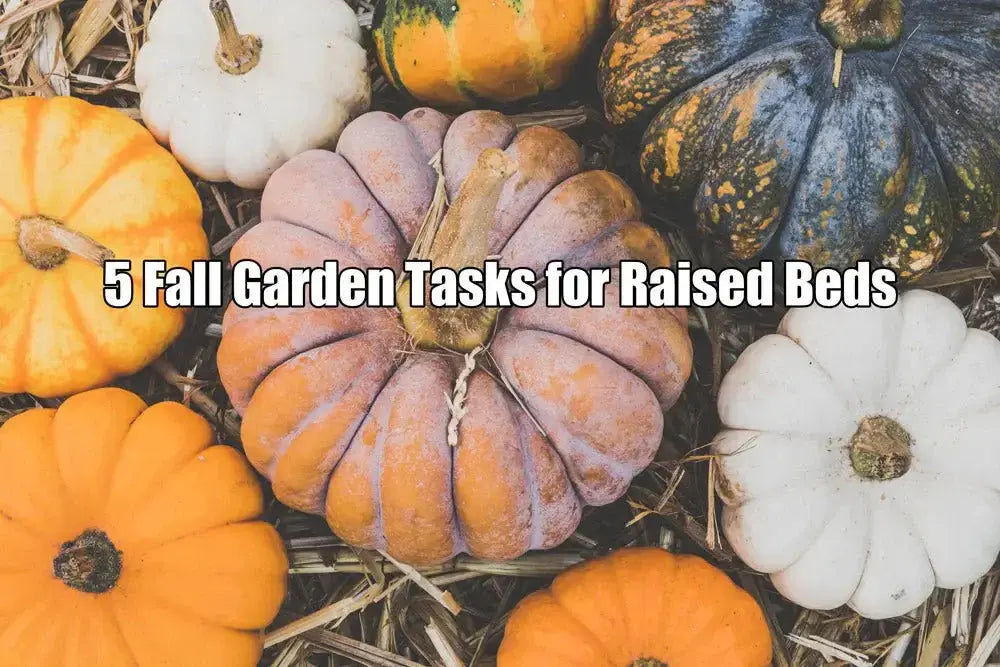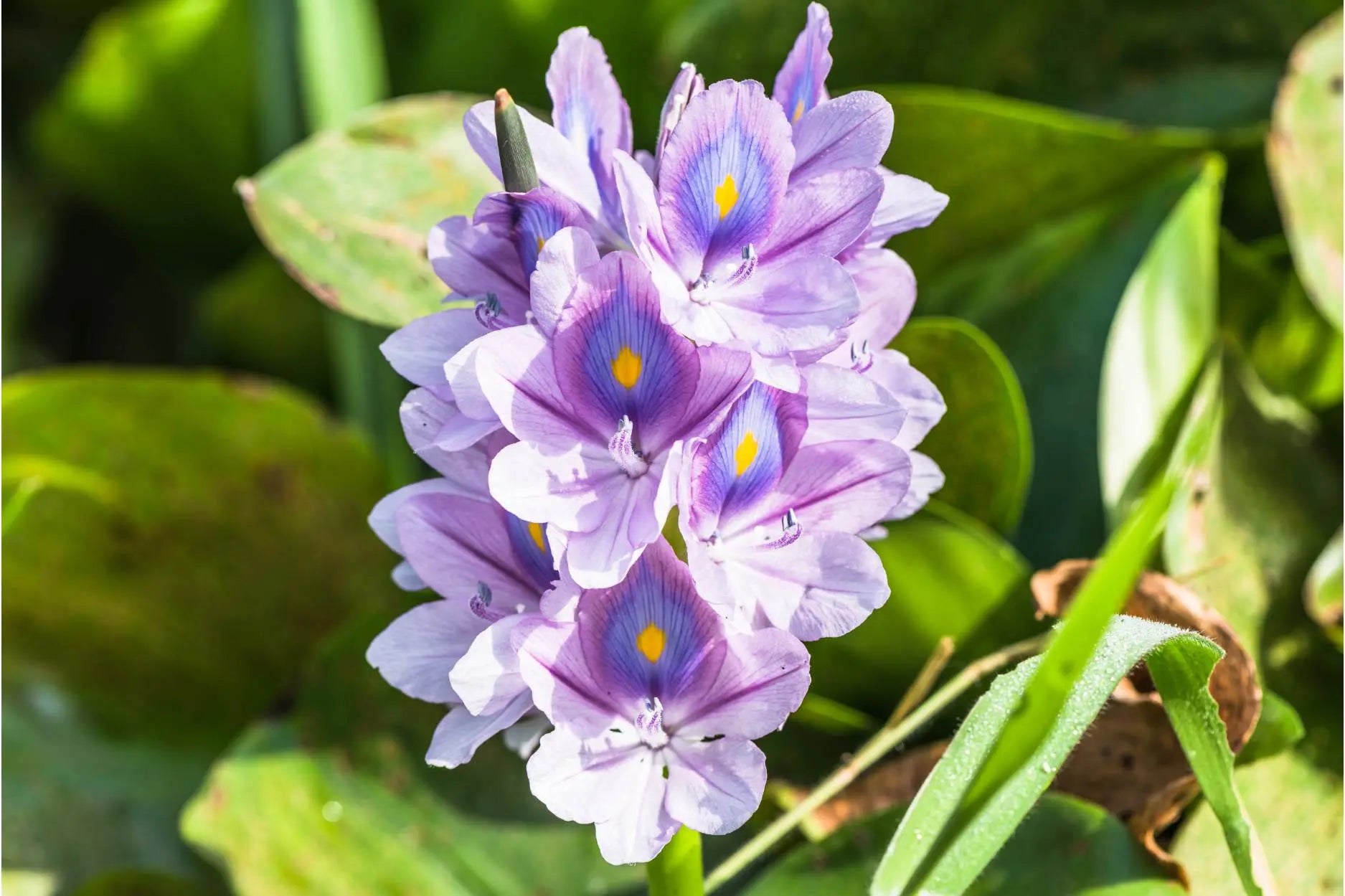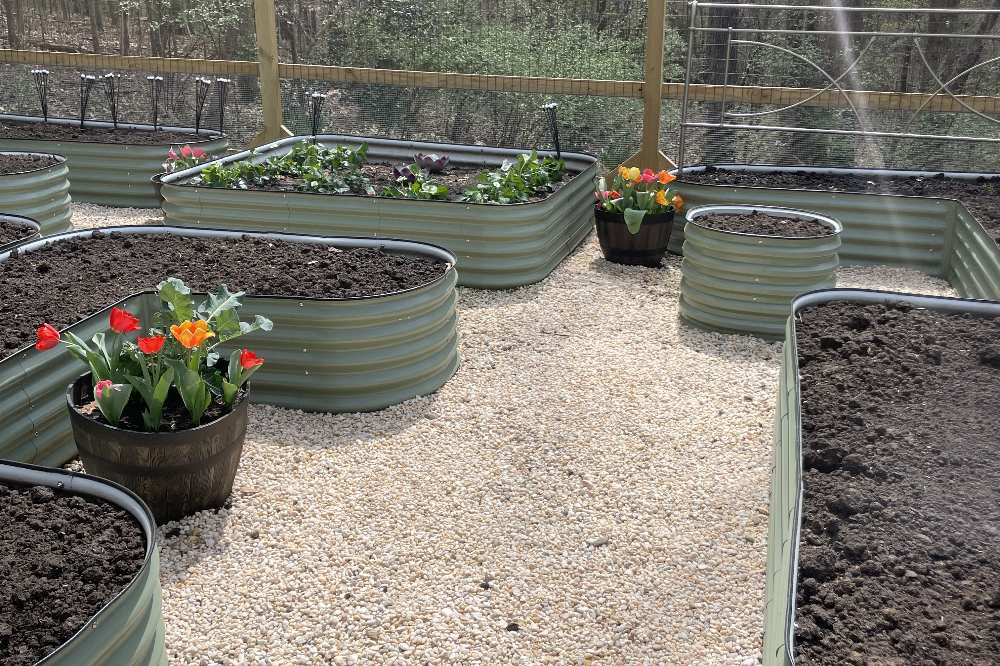Best Perennial Flowers for Raised Beds and Colorful Garden Borders
Perennial flowers are a popular choice growing in metal raised garden beds. These flowers offer long-lasting beauty that brightens up your garden throughout the seasons. Unlike annuals, which need to be replanted every year, perennials come back year after year after just one planting, blooming for multiple seasons. If you're thinking about adding some perennial flowers to your raised beds, this guide is a great place to start.
Perennial Flowers vs Annual Flowers

Compared to annual flowers, perennials offer a more lasting and consistent growth advantage. Annuals typically complete their entire life cycle—from germination to blooming to withering—within a single growing season. However, they require replanting or replacement each year, which can drive up both costs and maintenance demands.
On the other hand, perennial flowers only need to be planted once and will return year after year, bringing continuous color and depth to the garden. For gardeners in the UK, choosing perennial plants for raised beds UK can provide a practical way to enjoy low-maintenance blooms season after season.
When planning a raised bed garden, there's no need to choose between the two. With thoughtful design, you can combine the lasting structure of perennials with the seasonal vibrancy of annuals. This balance ensures dynamic color changes throughout the year while maintaining a cohesive and well-organized garden layout.
Perennial Flowers from Spring to Fall

For many garden enthusiasts, the most captivating aspect of a garden is how it transforms with each passing season. Perennial flowers that bloom throughout the warm months are key to creating a garden that feels alive with fresh color year-round.
By combining different varieties, you can create a relay of blooms across three seasons. For instance, columbines can start the show in early spring, followed by coreopsis and salvias lighting up the summer, while coneflowers and black-eyed Susans keep the display going well into autumn. Besides, many of these flowers also attract beneficial pollinators protecting your garden.
Here are a few perennial flowers that bloom from spring to fall:
- Coreopsis – Long-lasting blooms, bright colors, and adaptable to various conditions.
- Echinacea (Coneflower) – A summer staple with drought tolerance and bold, daisy-like flowers.
- Salvia – Spikes of blue or purple flowers with a long bloom time and pleasant aroma.
- Rudbeckia (Black-eyed Susan) – Warm yellow-orange blooms that signal the arrival of fall.
- Columbine – A cheerful spring bloomer with unique flower shapes and rich color varieties.
Low-Maintenance Perennials Recommendation

Low-maintenance perennial flowers are an excellent place to start a vibrant garden. These tough plants thrive with minimal care, because they resist pests and diseases, and tolerate drought. Many low-maintenance perennials thrive in poor soil, need little water, and can bloom reliably. They’re perfect for gardeners who want results without the hassle.
Here are a few great options for an easy-care garden:
- Echinacea (Coneflower) – Tolerates neglect and poor soil, and still delivers long-lasting blooms.
- Rudbeckia (Black-eyed Susan) – Blooms beautifully without frequent pruning.
- Sedum (Stonecrop) – Exceptionally drought-tolerant and nearly pest-free.
- Dianthus (Pinks) – Fragrant, hardy, and ideal for borders.
- Agapanthus (Lily of the Nile) – Requires minimal watering and bursts with blue blossoms.
Tall Perennial Flowers Recommendation
Plants’ height plays a crucial role in shaping visual effects. With their long blooming periods and vibrant colors, tall perennials flowers are perfect for lining fences, anchoring the back of raised beds, or standing proudly in the center of a garden.
Most tall perennials have sturdy stems and a stable form, allowing them to remain upright even in wind and rain. Many also attract pollinators like butterflies and bees.
Here are a few recommended tall perennials that bring both height and beauty:
- Delphinium – Elegant and upright with dense flower spikes in a range of striking colors.
- Peony (Paeonia) – Lush and full-bodied, with large, showy blooms that add classic charm.
- Tall Coneflower (Echinacea purpurea) – Ideal for dry conditions, long-blooming, and a staple in naturalistic garden designs.
Color Themes in Perennial Gardens

In garden layout design, color isn’t just visual appeal—it’s a powerful tool to create atmosphere and express emotion. When choosing perennial flowers, building your garden around a central color theme can help achieve a harmonious look.
Purple Perennial Flowers
Purple flowers bring a sense of calm, romance, and mystery. They often serve as transitional tones in garden beds and are ideal for cooler, moodier color palettes.
- Lilac (Syringa): Fragrant and abundant in spring.
- Geranium: Delicate blooms, adaptable, and long flowering.
Blue Perennial Flowers
Blue perennials offer a refreshing and tranquil feel, perfect for cooling the visual tone of your garden during the heat of summer.
- Salvia ‘Blue Hill’: Highly fragrant and drought-tolerant.
- Cornflower (Centaurea cyanus): Vivid blue blooms with elegant form.
Yellow Perennial Flowers
Yellow is one of the most energetic and cheerful tones, adding brightness and warmth to the garden. It pairs beautifully with purple and blue for striking visual contrast.
- Coreopsis: Long blooming season with bright yellow flowers that stand out easily.
- Black-eyed Susan (Rudbeckia): A bold autumn bloomer, highly adaptable and resilient.
Sun or Shade: Matching Perennials to Light Conditions

Different perennial flowers have varying light requirements. Understanding a plant’s sun or shade preference helps optimize your plants for better growth.
Full Sun Perennial Flowers
These plants thrive in open spaces with abundant, unobstructed sunlight. They are typically heat- and sun-tolerant and produce prolific blooms.
- Echinacea (Coneflower): A classic full-sun perennial, drought-resistant with a long blooming season.
- Rudbeckia (Black-eyed Susan): Especially vibrant in late summer and fall, with striking golden blooms.
Shade Perennial Flowers
Even in areas with limited light, you can still enjoy lush foliage and blooms. Shade-tolerant perennials often feature broad leaves and soft-colored flowers.
- Astilbe: Ideal for moist, shady areas, with graceful, feathery flower plumes.
- Hosta: Grown primarily for its ornamental foliage, though some varieties produce elegant, pale flowers.
Design a Lasting Flower Garden with Metal Raised Beds
Metal raised beds are not just for growing vegetables. They are also an efficient way to grow perennial flowers. Some special-shaped raised beds help define garden zones, improve drainage, and reduce soil compaction.
- Layer by Height:
Raised beds like the 32'' Tall 3 Tiered Raised Bed, or the 32'' Tall Castle-Shaped Raised Bed, are ideal for growing perennials. Place tall varieties like delphiniums, hollyhocks, or echinacea in the highest tier or the back row. In the middle, use plants like daylilies or coreopsis. Reserve the front or lowest tier for compact, ground-hugging perennials such as creeping phlox or lamb’s ear. - Seasonal Succession:
To enjoy color from early spring through fall, try starting with spring bloomers like bleeding hearts, columbine, and creeping phlox. Transition into summer with coneflowers, black-eyed Susans, and bee balm. For late-season interest, incorporate asters, sedum, and Japanese anemones. - Add Structural Plants:
Pair flowering perennials with ornamental grasses or lush foliage plants to anchor the design. Plants like hostas, ferns, and heuchera (coral bells) add texture and greenery even when blooms are scarce. Grasses such as blue fescue, Japanese forest grass, or little bluestem provide movement and a contrasting form that complements upright or mounding flowers.
Conclusion
Perennial flowers are the secret to a garden that grows more beautiful year after year. Whether you’re planting directly in the ground or designing colorful raised beds, these long-lasting blooms bring structure, seasonal color, and pollinator-friendly charm to your space.
From height and hue to bloom time and sun needs, perennials offer endless possibilities. Want a no-fuss cottage garden? Or a layered flower bed bursting with color from spring to fall? Perennials make it possible—with less effort and more reward.
Choose the right perennials for your climate and garden setup. Start small, grow gradually, and let your flower beds evolve into a vibrant, eco-friendly retreat you’ll love every season.


